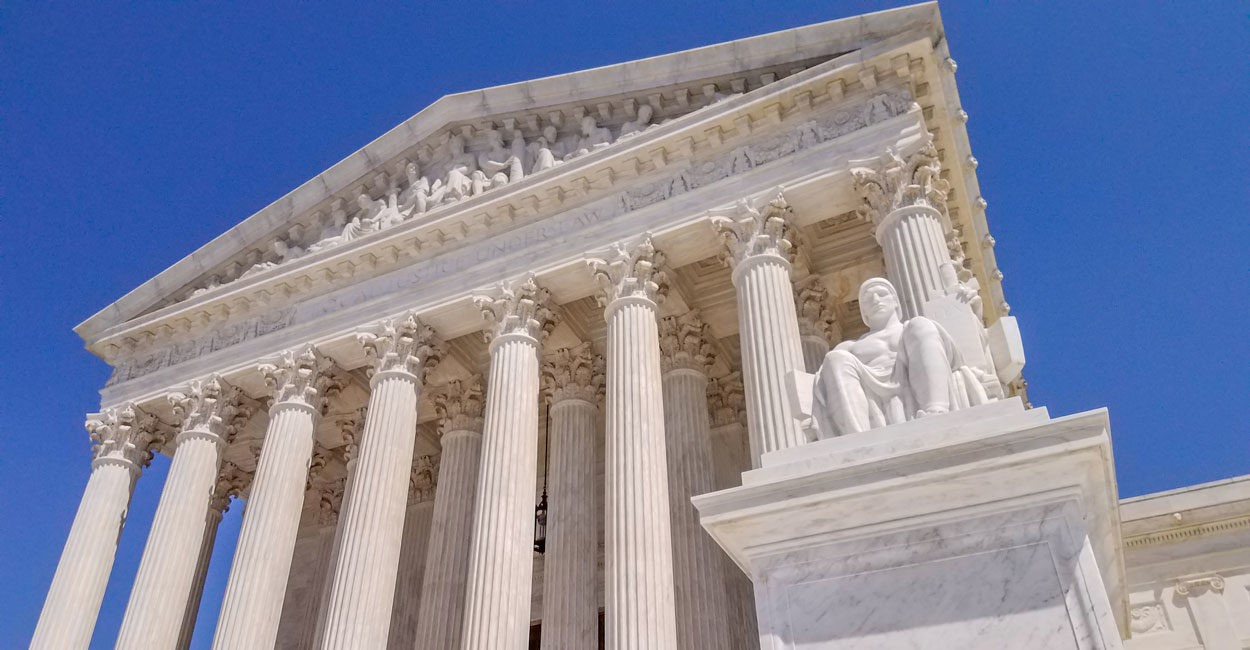
Supreme Court Poised for Another Year of Landmark Decisions
By Seamus Brennan – January 19, 2023
After a historic term for the Supreme Court in 2021-2022—during which the High Court overturned Roe v. Wade and solidified the most significant Second Amendment victory in more than a decade, among other important rulings—the Court is once again poised to hand down several potential landmark decisions by the conclusion of its term this summer.
If the Supreme Court delivers another slate of victories for constitutional conservatives, it will be a significant blow to the radical left legal movement, as well as the “creeping Taneyism” of Chief Justice John Roberts that has prevailed in recent years.
Here are three of the most high-profile issues the Court will address in the coming year.
Religious Liberty
In December, the Court heard arguments for 303 Creative v. Elenis, a high-profile religious liberty case in which Lorie Smith, a Colorado-based graphic designer, is challenging a law that would compel her to design websites for same-sex weddings, which violate her religious beliefs. Smith argues that the Colorado law in question forces her to implicitly support same-sex marriages and prohibits her from explaining her rationale for declining to design websites for same-sex couples.
Based on last month’s oral arguments, it appears the Court may rule in her favor. According to SCOTUSblog, Chief Justice John Roberts argued “that the Supreme Court has never approved efforts to compel speech that is contrary to the speaker’s belief”—a sentiment that was echoed by the other five conservatives on the Court. This case has many similarities to that of Colorado baker Jack Phillips, one of the litigants in the Masterpiece Cakeshop decision, who has thus far successfully resisted an onslaught of legal retribution for his refusal to bake a cake for a same-sex couple.
Election Law
The Court is also expected at the conclusion of this term to hand down two major decisions pertaining to election law, both of which could have significant implications for the 2024 presidential and congressional elections. In Moore v. Harper, the justices will decide whether the North Carolina Supreme Court can constitutionally invalidate congressional maps drawn by the state legislature and replace them with maps of its own. Last February, the North Carolina Supreme Court overturned a map drawn by the legislature, claiming that the legislature’s map was an instance of unlawful partisan gerrymandering. The High Court will decide whether the state Supreme Court’s actions violate the elections clause of the Constitution, which maintains that the “Manner of holding Elections for Senators and Representatives shall be prescribed in each State by the Legislature thereof.”
In another election law case, Merrill v. Milligan, the Court will decide whether Alabama’s 2021 congressional redistricting plan violates the Voting Rights Act, which prohibits racial discrimination in voting laws. Last February, the High Court temporarily blocked a lower court ruling that invalidated the redistricting plan. According to SCOTUSblog, the High Court “appeared inclined to permanently set aside the district court’s ruling” and allow the plan to stay in place in its October oral arguments.
Affirmative Action
In Students for Fair Admissions v. Harvard College and Students for Fair Admissions v. UNC—likely the most contentious cases this term—the High Court will consider whether to re-assess its controversial 2003 decision in Grutter v. Bollinger, which held that affirmative action in college admissions does not violate the 14th Amendment’s Equal Protection Clause. Students for Fair Admissions, the challenger in both cases, is a nonprofit group representing students and parents alleging that Harvard University and the University of North Carolina (UNC) are guilty of intentionally discriminating against Asian American applicants. The group argues that Asian American students “are less likely to be admitted than similarly qualified” applicants of other races due to affirmative action policies that unfairly weight an applicant’s race when considering them for admission.
The group’s claims are in part substantiated by a 2018 Heritage Foundation report, which found that “an Asian American with a 25 percent chance of admission to Harvard would see his chances rise to 35 percent if he were white, 75 percent if he were Hispanic, and 95 percent if he were black.” During oral arguments last fall, Students for Fair Admissions argued that UNC is guilty of violating the 14th Amendment’s Equal Protection Clause, and that Harvard has violated Title VI of the Civil Rights Act, which prohibits race-based discrimination in federally funded education programs.
The Students cases are the best opportunity in recent history to deal a blow to the left’s identity politics regime, as well as the greatest chance to date to dismantle the racially biased practice of affirmative action.
***
These cases make up just a few of the banner decisions the Court is expected to release this June, a list that includes a legal challenge to Joe Biden’s attempted termination of the Trump administration’s “Remain in Mexico” policy, as well as a challenge to the Environmental Protection Agency’s interpretation of the Clean Water Act.
But regardless of how the Court rules in each of these cases, one thing remains certain: with the Court’s recently solidified 6-3 conservative majority—bolstered by Donald Trump’s three nominees—the conservative legal movement finds itself in a once-in-a-generation position to check the left’s usurpation of the constitutional order. Following what was one of the most successful years in court for conservatives in United States history, the Supreme Court may now be entering a golden age for constitutionalism.
